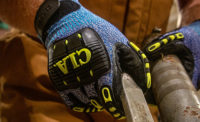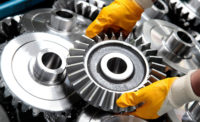At the same time, a series of Harmonised Standards — European Norms (ENs) — were created for all products groups within the definition of PPE. These standards were formulated to produce performance levels rather than simple pass or fail criteria.
In addition, Notified Bodies were created by Government appointment in the various EU countries, usually to existing recognised and independent accredited test houses, so that PPE could be independently tested against one or more appropriate Standards (ENs).
A Technical File for each product is submitted to a Notified Body and if all is correct, a unique EC Type Examination Certificate is issued by the Notified Body which permits the use of the CE mark on the product.
The system also embraces and encourages the use of Quality Systems, such as ISO 9001, in the manufacture of PPE, and the Notified Bodies, where appropriate, are involved in regular auditing and scrutiny of such systems or product at the place of manufacture. Only CE-marked PPE product is permitted to enter the EU market. This system of product evaluation and CE marking can only have legal status within the EU, but it is now recognised and accepted in many parts of the world and all major manufacturers show in their catalogues the product performance levels that have been evaluated by this independent system.
Advances in hand & arm protection
Developments in hand and arm protection have dramatically expanded in recent years. Traditional methods of cutting and sewing materials such as leather and textiles, sometimes in combination, are still very much alive. So too is the conversion of mainly knitted textiles into coated product in this sector, and the processes involved make use of polymer systems such as PVC, natural and synthetic rubbers and PU using various coating techniques to produce a very wide range of products from ultra lightweight to heavy duty in order to meet the end use demands associated with mechanical risk and chemical hazard, sometimes in combination.
Gloves produced from Automatic Glove making machines in both coated and uncoated forms have witnessed an expanding demand in recent times. Automatic machine knitted glove products date back to the early 1960’s but early machine gauges, that is needles per inch, were in the 5 to 7 range and accommodated bulky yarns such as wool and acrylics and regenerated mixed fibres etc. These products were ideal for the domestic/retail markets and flourished there. Early efforts to produce industrial products were not successful to meet a wide product range, but some PVC dotted and patterned gloves appeared at the low end of the market. Meanwhile technical yarns and textiles in general advanced apace and these developments continue today.
Only after machine makers went into the next stage of development with 10 gauge then 13 gauge did industrial products take off. When the advances in technical yarns were able to be incorporated, this opened up a much wider market for these products.
Knitted structures are an interconnected series of loops and even fairly inelastic yarns such as spun cotton, the aramids, flat nylon and polyester filaments etc., can produce a degree of stretch when knitted and add comfort to the finished product. However, the incorporation of textured nylon, which has inherent stretch property and ultra fine elastane-type yarns in machine-knitted products have been major factors in enabling machine-knitted gloves, both coated and uncoated and in all the various yarn combinations, to confer better fitting to the hand.
Meeting end-user requirements
Automatic glove making machinery has continued to develop and through advances in engineering and computerisation, 15 gauge and the latest 18 gauge machines are now available. All automatic machines for glove production use a single yarn as the feed, but the yarn can be a compound of other yarns. Yarn combinations in single and multiple arrangements are endless, but range from simple spun natural and synthetic yarns, filament synthetics such as polyester and nylon through to the aramids such as Kevlar®, Nomex® and Dyneema®, ceramic and steel to mention the main ones. All of these can be combined with ultra fine elastane-type elastic yarns in achieving better fit and comfort to the wearer. Finished products are available in coated or uncoated versions depending on end use, with coatings such as PVC, Natural Rubber, Nitrile, Neoprene and Polyurethane being the main polymer systems.
The latest machines are increasingly clever and complex and allow changes in structure to be made in different areas of the glove so particular requirements of end use can be met. Some of the recent 18-gauge lightweight coated products approach “second skin,” while possessing excellent dexterity, comfort and performance. Each progression in machine gauge has led to product with increased comfort, while maintaining a high performance with yarn selection. The 18-gauge machine knit products are capable of producing very sophisticated product.
Investment in this technology continues to be massive but unavoidable for all major manufacturers. Yarns and fabrics continue to be developed for new products in all areas of domestic, industrial and military end uses. There is no doubt that the sophistication of product and design in this important area of industrial protection will continue to meet increasing demand in end use.






